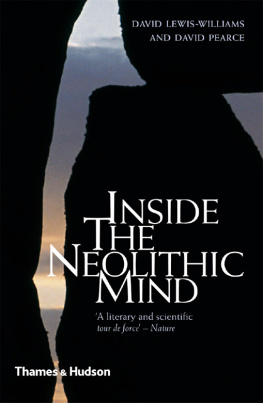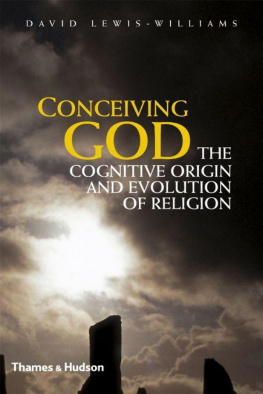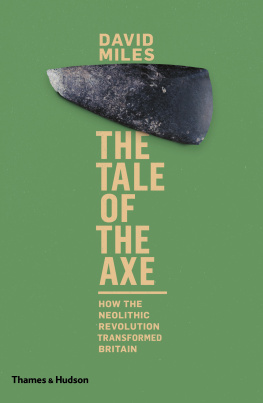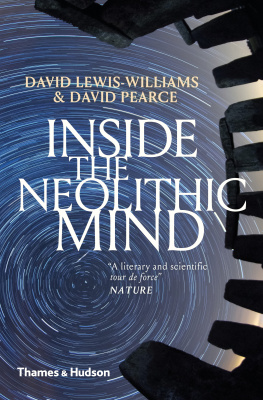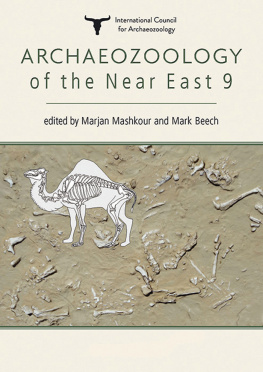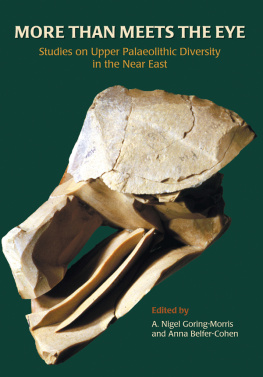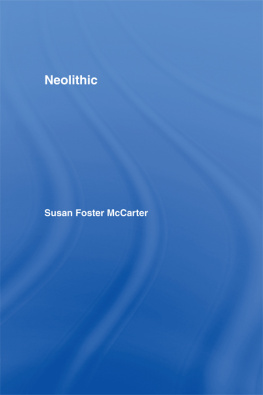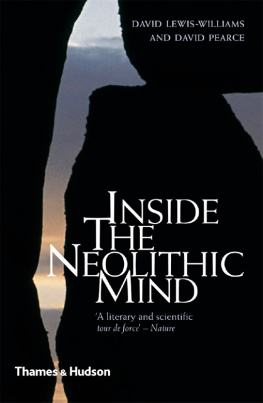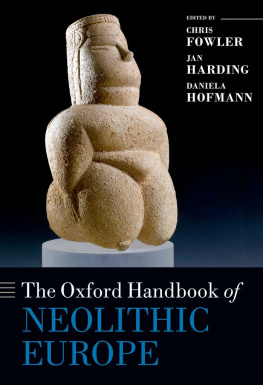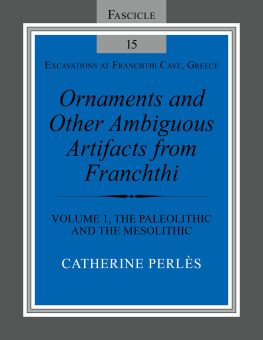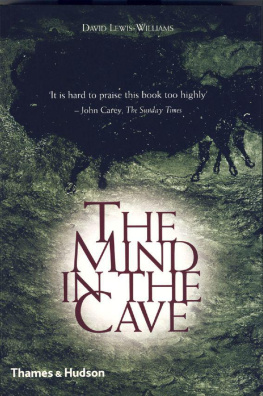
David Lewis-Williams is Professor Emeritus and Senior Mentor in the Rock Art Research Institute, University of the Witwatersrand, Johannesburg. He is world-renowned for his lifetimes work on ancient rock art. His many books include Deciphering Ancient Minds: The Mystery of San Bushman Rock Art (with Sam Challis), Conceiving God: The Cognitive Origin and Evolution of Religion, The Mind in the Cave: Consciousness and the Origins of Art and The Shamans of Prehistory: Trance and Magic in the Painted Caves (with Jean Clottes).
David Pearce is a researcher in the Rock Art Research Institute, University of the Witwatersrand, Johannesburg.
Other titles by David Lewis-Williams published by Thames & Hudson as eBooks include:
Deciphering Ancient Minds: The Mystery of San Bushman Rock Art
Conceiving God: The Cognitive Origin and Evolution of Religion
The Mind in the Cave: Consciousness and the Origins of Art
For these and printed editions see our websites
www.thamesandhudson.com
www.thamesandhudsonusa.com
Originally published in the United Kingdom in 2005 as
Inside the Neolithic Mind: Consciousness, Cosmos and the Realm of the Gods
ISBN 978-0-500-05138-2
by Thames & Hudson Ltd, 181a High Holborn, London WC1V 7QX
and in the United States of America by
Thames & Hudson Inc., 500 Fifth Avenue, New York, New York 10110
Copyright 2005 Thames & Hudson Ltd, London
This electronic version first published in 2012 by
Thames & Hudson Ltd, 181a High Holborn, London WC1V 7QX
First published in 2012 in the United States of America by
Thames & Hudson Inc., 500 Fifth Avenue, New York, New York 10110
To find out about all our publications, please visit
www.thamesandhudson.com
www.thamesandhudsonusa.com
All Rights Reserved. No part of this publication may be reproduced
or transmitted in any form or by any means, electronic or mechanical, including
photocopy, recording or any other information storage and retrieval system,
without prior permission in writing from the publisher.
ISBN 978-0-500-77031-3
ISBN for USA only 978-0-500-77045-0
On the cover: A detail of Stonehenge.
Photo D. G. Pearce, Rock Art Research Institute
Preface
The oldest monuments constructed with massive stones are in western Europe. Though modern visitors do not always realize it, these impressive structures Stonehenge and Avebury in England, Newgrange in Ireland and Gavrinis in Brittany are four that readily spring to mind are more ancient than the Egyptian pyramids, and they enshrine beliefs as powerful and as complex as those of the later Egyptians. The west European megalithic monuments date back to the early Neolithic period, arguably the most significant turning point in all human history. The full sweep of the period lasted from approximately 10,000 to 5,000 years ago depending on the geographical region in question and was the time during which agriculture became a way of life.
Yet those ancient west European monuments were not the first flicker of human interest in massive stones. It is now becoming clear that the use of megaliths in the building of what are surely religious centres of some sort goes back even further. At Gbekli Tepe and other sites in southeastern Turkey, even before the adoption of farming, people were carving large stone pillars, embellishing them with fine carvings of animals, birds and reptiles, and erecting them in semi-underground chambers. This was the time when the sort of fractious society that we know today was born in the Old World.
This is not a textbook designed to present all the excavation sites, researchers, facts, dates and pottery types of that intriguing time. Nor does it attempt to cover features of the Neolithic as they appeared in various parts of the world the Americas, for instance. Rather, it is something at once more general and more specific.
Its generality is founded on the working of the human brain that, in all its electro-chemical complexity, creates what we call our minds. The neurological functioning of the brain, like the structure and functioning of other parts of the body, is a human universal. The specific contents of individual minds, their thoughts, images and memories, are another matter altogether; content is largely, but not entirely, provided by cultures as they are, or were, at specific times in human history. Content is therefore always changing. The way in which brain structure and content interact to produce unique life-patterns and belief systems is a key issue that we explore.
Specifically, we focus on two slices of the Neolithic, two contrasting times and places, both of which are in the Old World: the Near East and western Europe. By narrowing our focus, we can give some idea of the unity that exists within a seemingly broad diversity and suggest what it was that held the Neolithic together and gave it its essential flavour. We are therefore in some ways like miners, rather than geologists. Miners seek out the richest seams; there is no point in wasting time on uneconomic seams with only traces of the desired coal or precious metal. Geologists, on the other hand, study all the rocks and formations in their chosen region. They are the ones who write the indispensable textbooks on which so many writers, and of course miners, depend.
The Near East, our first rich seam, was where agriculture and large settlements started, at least in the part of the world with which we are concerned. We consider sites such as Nevali ori, Gbekli Tepe, Ain Ghazal, Jericho and atalhyk (see Fig. 1). Like the even more famous ashand lava-inundated Pompeii, these sites preserve evidence not only for the ways in which their inhabitants made a living, but, for our purposes more importantly, also for how they thought, what they believed and some of the rituals they performed. Their imagery and, for 21st-century Westerners, bizarre practices are valuable seams indeed if only we can find a way to sink an exploratory shaft into at least some of their meanings. Meaning is, of course, itself a difficult concept. We need to ask questions like: Meaning for whom? To what extent did Neolithic people actually formulate their beliefs? How did meaning articulate with action? Did action concretize meaning?
We contrast the mud-brick and stone houses of the Near East with the massive stone monuments of Brittany, Great Britain, Ireland and Iberia, our other focus of attention. Atlantic Europe, whither farming spread from the Near East, certainly presents challenges, but it also opens up opportunities to archaeologists seeking thought-lives of the past and the ways in which belief systems articulated with daily life. Anyone who has crept down the narrow passage of the Gavrinis tomb in Brittany and marvelled at the varied ways in which each massive standing stone is fully covered with swirling, interlinked patterns and images will sense an enveloping conceptual universe, one that in some way motivated the builders to drag huge stones from distant sources, to raise them into place and then to carry their dead to the end of the elaborate passage. Meaning and action went hand in hand.
Contrasts between the sites of Atlantic Europe and those in the Near East enable us to ask further questions. In what ways did beliefs about the rockimmured dead of Gavrinis, Newgrange and other megalithic sites differ from beliefs about skulls buried beneath Near Eastern mud-plastered floors? Was there an underlying, not easily detected, bedrock of belief that expressed itself in contrasting ways? In geological terms, was there a subterranean chamber of molten rock that rose to the surface in different places to form batholiths, each similar to others in its origin but each shaped by the forces of erosion to display its own hills and valleys?

